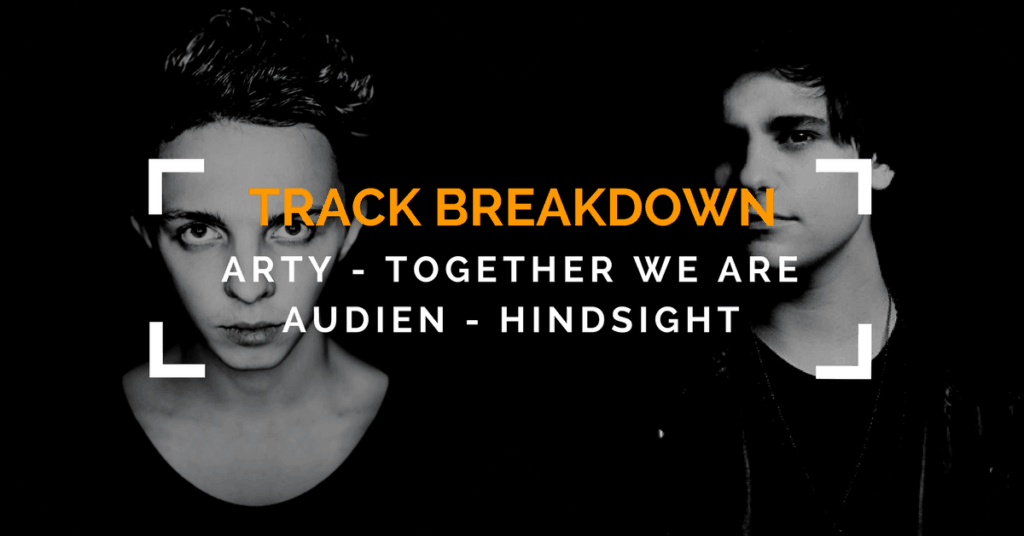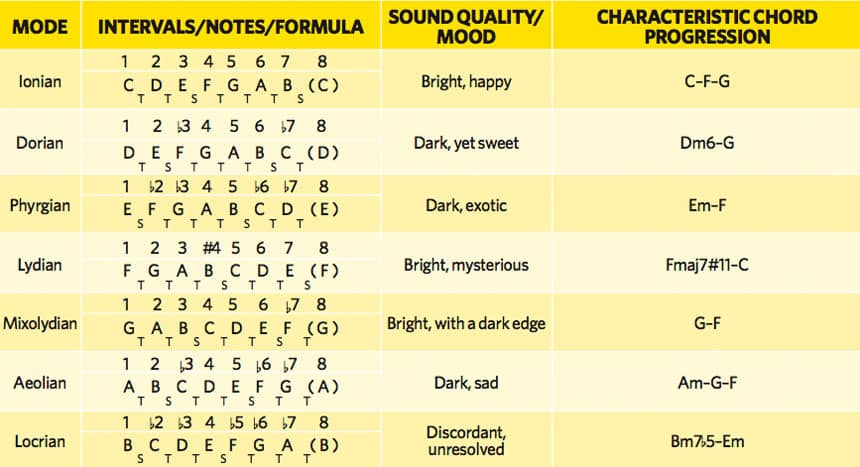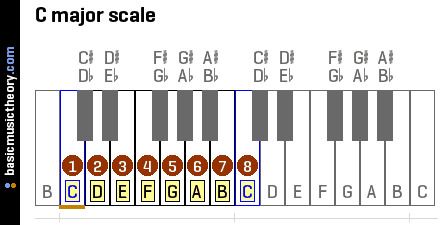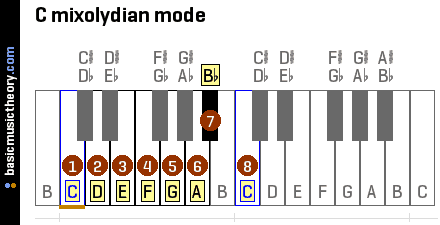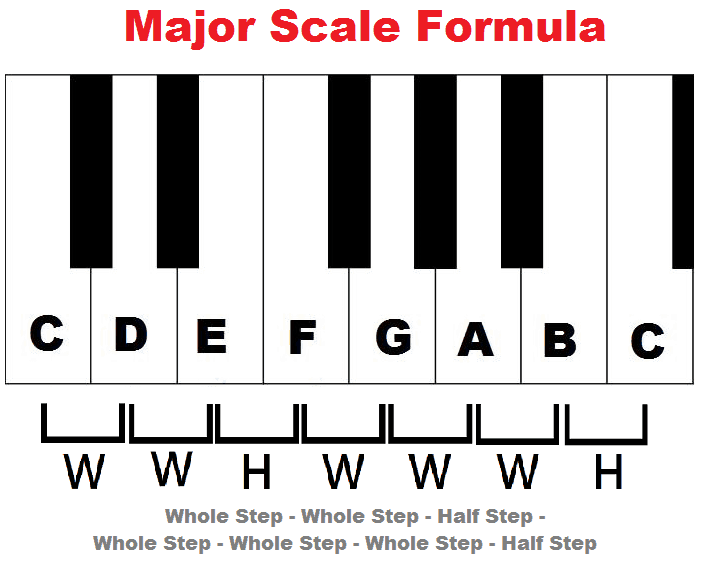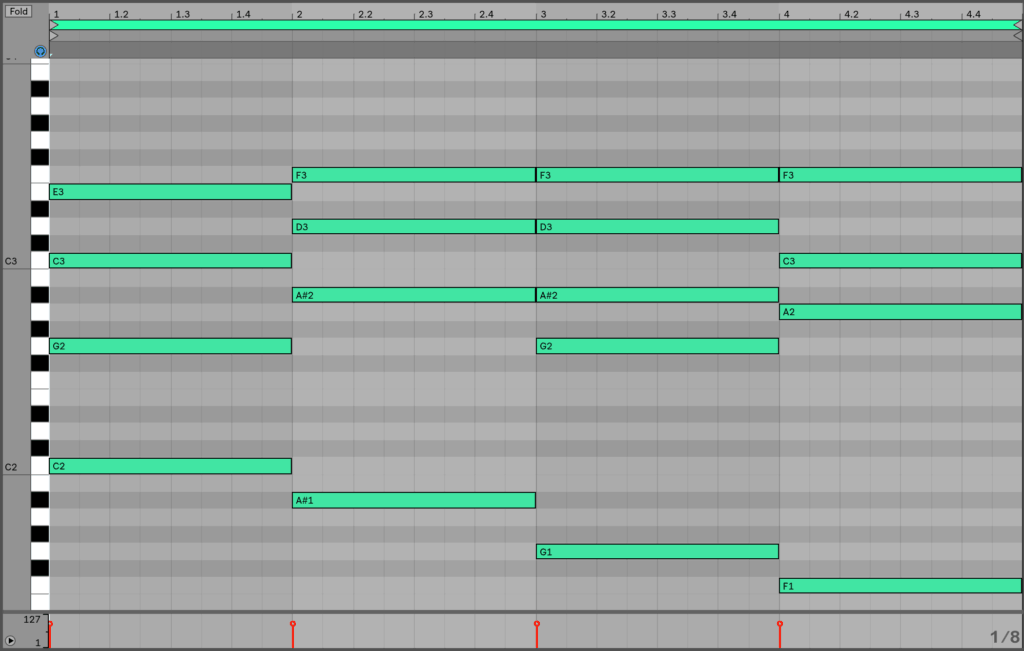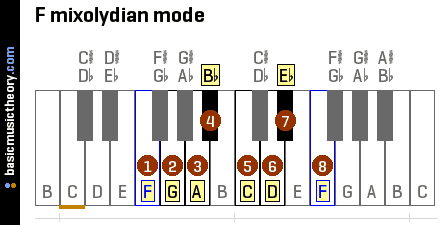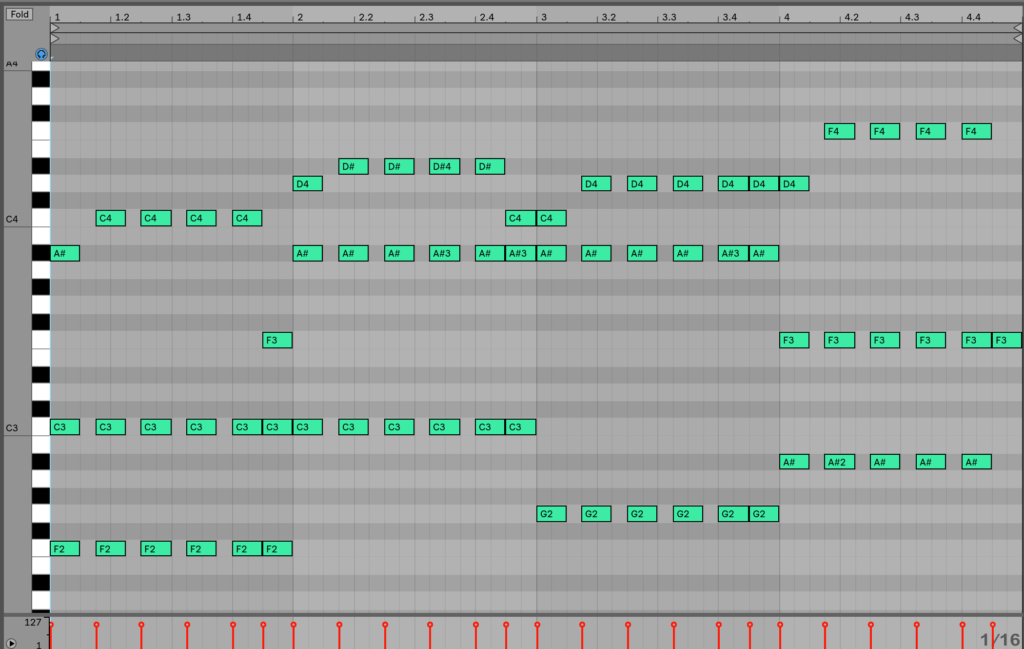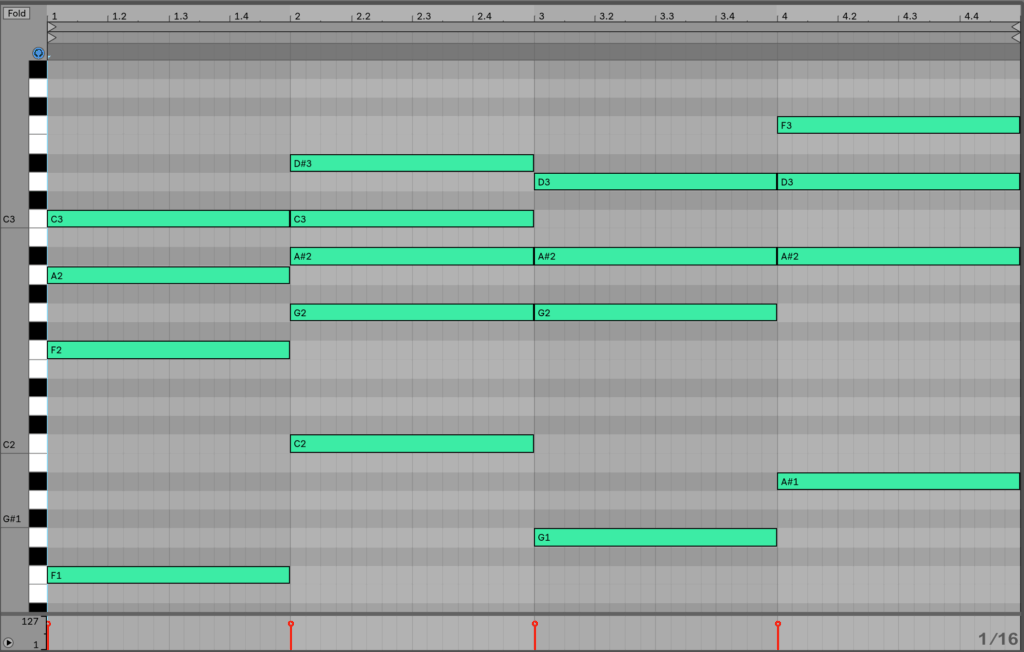Hey producers, welcome to the latest installment of our tutorial series, Track Breakdowns.
In this series, we take a look at a wide variety of popular tracks, dissect them, and discover why they work.
Ultimately, I aim to teach you the techniques used in each track so that you can apply them to your own productions.
In this breakdown, we’ll be looking at two different songs: Together We Are by Arty and Hindsight by Audien.
Why did I choose these two? As we’ll find out later, neither of these songs are in a major or minor mode.
Mode – a type of scale
Major and minor are types of modes. There are seven (common) modes used in popular music.
You may have heard some of their names thrown around: Lydian, Ionian (major), Mixolydian, Dorian, Aeolian (minor), Phyrgian, and Locrian.
Whats cool about these different modes?
Each mode has a distinct emotional blueprint. Rather than limit yourself to the emotional quality of only the Ionian (major) and Aeolian (minor) modes, learning other modes is a great way to expand your songwriting palette.
(via musicradar.com)
In this article, I wanted to give you a practical and actionable breakdown of two popular modes: mixolydian and dorian.
We’ll break down the formula for each of these modes, and take a look at a real world example of these modes in action. We’ll learn exactly what makes these modes unique, and how we can utilize this when building progression and melodies.
Here’s what we’ll cover:
- Learning the Mixolydian Mode
- How to Write a Mixolydian Chord Progression
- Mixolydian Track Analysis: Together We Are By Arty
- Learning the Dorian Mode
- How to Write a Dorian Chord Progression
- Dorian Track Analysis: Hindsight by Audien
Learning the Mixolydian Mode
Let’s visit our old friend, C major. C major is easy because it’s all white notes, starting on C.
There is only a one note difference between the major scale and mixolydian: the seventh.
In a major scale, the 7th is 11 semitones, or a major seventh, above the root. In the mixolydian mode, the 7th is only 10 semitones, or a minor seventh, above the root.
As you can see below, the C major scale and C mixolydian mode are nearly identical, except instead of a “B”, C mixolydian has a “Bb”.
How do we build a mixolydian scale?
If you’re familiar with major scales, all you need to do is build a major scale and drop the seventh down a half step.
Alternatively, recall that there is a formula to build a major scale off of any note. “W” represents a whole step and “H” represents a half step.
Major Scale Pattern: W – W – H – W – W – W – H
There is also a formula for building a mixolydian scale:
Mixolydian Scale Pattern: W – W – H – W – W – H – W
Using this pattern, you can build a mixolydian scale off any note.
How to Write a Mixolydian Chord Progression
Writing a chord progression in a mixolydian mode is the same as in any other.
Once you’ve decided what key you are in, it’s best to find what diatonic triads are in that key. Then, simply build a progression using those chords.
Because of the flatted seventh note, the chords in a mixolydian mode will be different than those in a major key.
For reference, here are the seven diatonic triads in the key of C Major.
| C Major | Chord |
| 1 | C Major: C-E-G |
| 2 | D Minor: D-F-A |
| 3 | E Minor: E-G-B |
| 4 | F Major: F-A-C |
| 5 | G Major: G-B-D |
| 6 | A Minor: A-C-E |
| 7 | B Diminished B-D-F |
Now, let’s look at the diatonic triads in C mixolydian.
| C Mixolydian | Chord |
| 1 | C Major: C-E-G |
| 2 | D Minor: D-F-A |
| 3 | E Diminished: E-G-Bb |
| 4 | F Major: F-A-C |
| 5 | G Minor: G-Bb-D |
| 6 | A Minor: A-C-E |
| 7 | B Major Bb-D-F |
You’ll notice three differences between C major and C mixolydian: the three chord, the five chord, and the seven chord (I’ve bolded these above).
In C mixolydian, the three chord is E diminished, the five chord is G minor, and the seven chord is B major.
When building a mixolydian progression, the fifth and seventh chords are great chords to use since they are part of what gives the mixolydian mode it’s distinct emotional tone.
The fifth is the called the “color chord” of mixolydian, as it gives the mode it’s bright and hopeful sound.
Let’s look at an example, then dive into the first track analysis.
Below is a chord progression in C mixolydian.
The progression is: C – Bb – Gm – F
Numerically, this is: I – VII – v – IV
This progression isn’t too complicated, but (to my ear) sounds pretty nice. This is because it unlocks the color chords of the mixolydian mode.
In particular, it uses the five chord, Gm.
Normally, the five chord in a major key is major. However, because the five chord in the mixolydian mode is minor, it grabs the listener’s attention because it’s not what they expect to hear.
Have a listen below.
(I’ve added a seventh to the Gm, making it Gm7)
Listen:
Notice how peaceful and hopeful this chord progression is?
This is the characteristic sound of the mixolydian mode. It’s brighter than a minor key, but not over-the-top happy.
Many people called mixolydian the Coldplay mode, since many of their songs are written using it.
Popular mixolydian songs:
- Sweet Home Alabama by Lynyrd Skynyrd
- Sweet Child O’Mine by Guns’n’Roses
- Clocks by Coldplay
- Hey Jude by The Beatles (outro section only)
And of course, Together We Are by Arty.
Mixolydian Progression Analysis: Together We Are by Arty
Together We Are is in the key of F mixolydian.
Pop quiz: What’s the color chord of F mixolydian?
Want the MIDI from this article? Grab it as part of our Track Breakdown MIDI Vault below!
Get 25 high-quality MIDI chord progression files for free 🎹
Our Track Breakdown MIDI Vault is packed with chord progression MIDI files from songs like Mura Masa’s ‘Lovesick’, Flume’s ‘Say It’ & more! 👇
It’ll be the minor five chord. This means the color chord is C minor.
Let’s take a look at a transcription of the main progression.
Listen:
Let’s simply these chords, removing the rhythm and putting them in closed voicing.
Listen:
Alright, what are we working with?
The chord progression is: F – Cm7 – Gm – Bb
Numerically, this is: I – v7 – ii – IV
This is a nice, solid progression. It starts on the one, moves to the five (i.e the color chord), goes to the two chord, then finishes strong on the four chord.
Other than the progression itself, what makes this track work?
Without even listening back to the original progression, we can nearly see what makes the progression work.
The two elements are:
- Open voicing
- Top note contour
The open voicing of these chords (i.e. they take up wider then an octave range) makes the progression big and full. This fits well with the anthemic vibe of the song.
Lastly, what is meant by top note contour?
This progression slowly builds in energy as the top note climbs higher and higher.
Listen back to the progression, and hear how the energy almost “opens up”, building higher and higher towards the end of the loop. This is in good part due to the climbing top line.
Let’s do a quick recap of what we’ve covered so far, allowing you to make the most of this article.
Quick Summary
- To build a mixolydian scale, build a major scale and drop the seventh down one semitone.
- To build a mixolydian progression, find the seven diatonic triads, then build a progression just like you would in a major or minor key, keeping the following in mind:
- The one chord is good to start with, as is the four chord to end on, because of the powerful IV-I motion (also called the plagal cadence)
- Use the color chord, which is the minor five chord.
- Another good choice is the seven chord, which is a secondary color chord.
Part 2
For part 2 of this article, including the breakdown of Audien’s Hindsight, click here.
Get 25 high-quality MIDI chord progression files for free 🎹
Our Track Breakdown MIDI Vault is packed with chord progression MIDI files from songs like Mura Masa’s ‘Lovesick’, Flume’s ‘Say It’ & more! 👇

